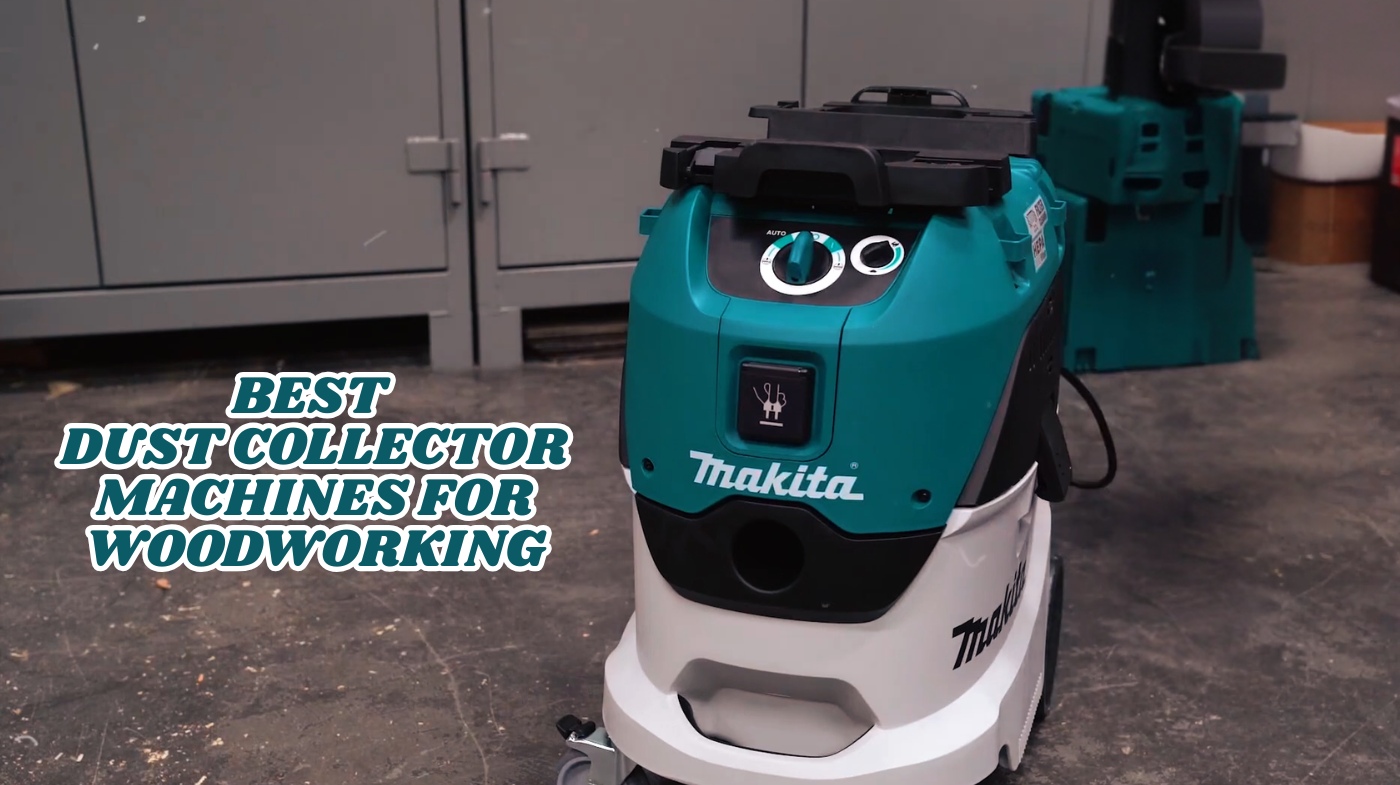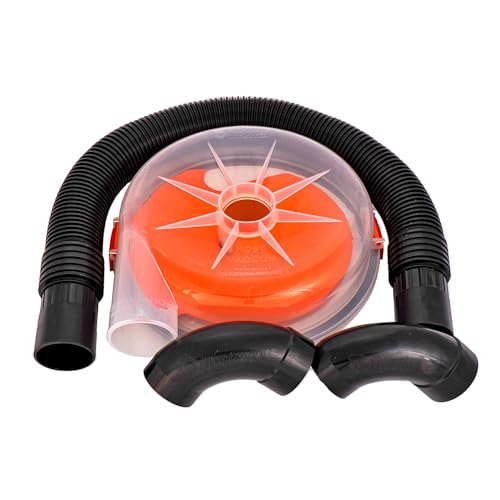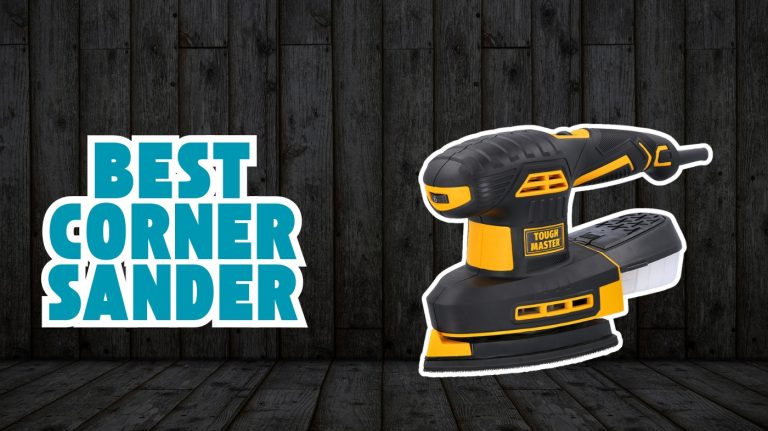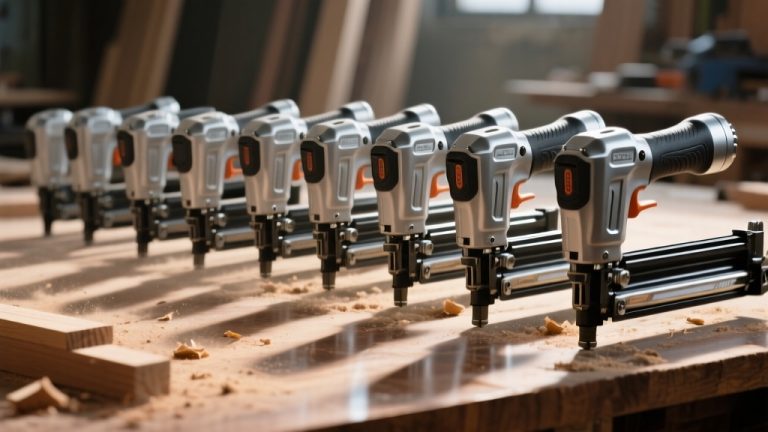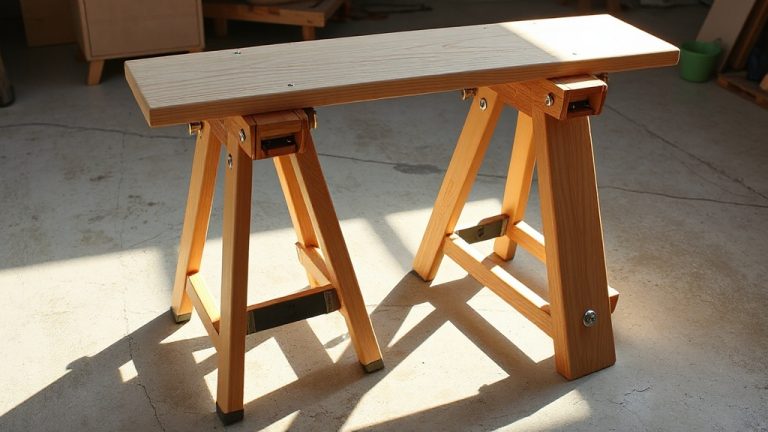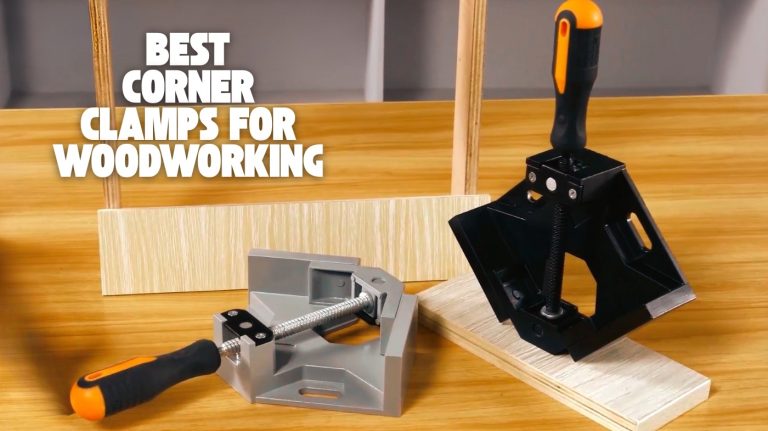Best Dust Collector Machines for Woodworking: Top Picks
You want a dust collector that matches your tools and workshop size for strong airflow and efficient dust removal.
Look for models like the Shop Fox W1826 with 2.5 micron filtration, the portable WEN DC1300 with a large 50-gallon bag, and the DEWALT DXVCS002 dust separator for easy cleanup.
Consider motor power, noise level, and mounting options to fit your space. Keep your shop safe and dust-free—explore how these features make a difference.
| Image | Name | Editor's Rating | Price |
|---|---|---|---|

|
Shop Fox W1826 Wall Dust Collector, 2.5 ...
|
|
|

|
DEWALT Dust Separator with 6 Gallon Poly...
|
|
|

|
WEN DC1300 1,300 CFM 14-Amp 5-Micron Woo...
|
|
|

|
BUCKTOOL 1HP 6.5AMP Wall-mount Dust Coll...
|
|
|

|
Dustopper The Dustopper PRO, Low-Profile...
|
|
Key Takeaways
- Choose dust collectors with 400-600+ CFM airflow to efficiently handle your woodworking tools and maintain strong suction.
- Prioritize filters that trap 2.5-micron particles or smaller, ensuring high air quality and health safety.
- Opt for motors of 1 to 1.5+ HP balancing powerful suction with manageable noise levels below 85 dB.
- Select models with large, easy-to-empty dust bags and accessible filters for minimal maintenance interruptions.
- Consider space-saving wall mounts or portable units with wheels to fit your workshop layout and mobility needs.
Shop Fox W1826 Wall Dust Collector, 2.5 Micron Filtration,White
- Motor: 1 HP, 110V/220V, single-phase, prewired 110V
- Motor amp draw: 7A/3.5A
- Air suction capacity: 537 CFM
If you’re working in a small or medium-sized shop and need a powerful yet compact dust collector, the Shop Fox W1826 is an excellent choice.
This wall-mounted unit offers 537 CFM suction with a 1-horsepower motor, fitting tight spaces perfectly. It filters dust down to 2.5 microns, keeping your air cleaner.
The cloth filter bag includes a window to monitor dust levels and a zipper for easy emptying. You’ll appreciate the quiet 85 dB operation and simple touch control.
Plus, it’s compatible with various setups and tools, making it a versatile, reliable solution for your woodworking dust collection needs.
Best For: Small to medium-sized woodworking shops or home workshops needing a compact, powerful, and wall-mountable dust collector for efficient dust control.
Pros:
- High suction power at 537 CFM with a 1-horsepower motor, outperforming many shop vacs.
- Space-saving wall-mount design ideal for limited workshop space.
- Effective 2.5-micron filtration with a convenient cloth bag featuring a dust-level window and easy-empty zipper.
Cons:
- Dust bag removal can be messy and requires gloves and masks due to limited zipper opening.
DEWALT Dust Separator with 6 Gallon Poly Tank (DXVCS002)
- 【HIGH EFFICIENCY】 Our DEWALT high efficiency dust separator can capture wood chips and other...
- 【WIDE APPLICATION】 This dust separator applies to most materials: wood chips, drywall dust,...
- 【COMPATIBLE DESIGN】 The four-caster base of the dust collection system makes it very stable and...
The DEWALT Dust Separator with a 6 Gallon Poly Tank (DXVCS002) suits woodworkers and contractors who need powerful debris separation without frequent filter changes.
Its cyclone filtration captures 99.5% of debris, protecting your vacuum’s filter and maintaining strong suction. Lightweight and portable with four wheels, it handles wet and dry debris alike.
Compatible with most vacuums, it reduces maintenance costs and cleanup time by separating large particles before they reach the filter.
Easy to empty and durable, this separator improves your workspace cleanliness, extends vacuum life, and keeps your tools running efficiently during demanding projects.
Best For: Woodworkers, contractors, and DIY enthusiasts who require efficient dust and debris separation to protect vacuum filters, maintain strong suction, and reduce maintenance during wet or dry cleanup tasks.
Pros:
- Captures 99.5% of debris with cyclone filtration, significantly extending vacuum filter life.
- Portable and lightweight design with four wheels for easy maneuverability on job sites.
- Handles both wet and dry debris, reducing cleanup time and maintenance costs.
Cons:
- May add bulk and occupy more space compared to using a vacuum alone.
WEN DC1300 Woodworking Dust Collector with 50-Gallon Bag and Mobile Base
- Circulate up to 1,300 cubic feet of air per minute
- Attach up to two tools at a time with the dual 4-inch air inlets
- Vertical collection bag holds up to 50 gallons of dust
Looking for a dust collector that combines powerful airflow with easy mobility? The WEN DC1300 delivers 1,300 CFM with its 14-amp motor and 10-inch steel impeller, efficiently capturing dust from multiple tools via dual 4-inch inlets.
Its 50-gallon vertical bag reduces frequent emptying and features a quick-release clasp for easy disposal. Mounted on a mobile base with swivel casters, you can easily move it around your workshop.
Users praise its quiet operation and strong suction, making it ideal for small to medium shops.
Best For: Woodworkers and small to medium workshop owners seeking a powerful, mobile dust collection system with high capacity and versatile tool connectivity.
Pros:
- High airflow of 1,300 CFM with a powerful 14-amp motor and 10-inch steel impeller for efficient dust collection.
- Large 50-gallon vertical bag with quick-release clasp minimizes emptying frequency and simplifies disposal.
- Mobile base with swivel casters allows easy maneuverability around the workshop.
Cons:
- Requires a dedicated circuit for optimal performance, which may not be available in all workshop setups.
BUCKTOOL Wall-mount Dust Collector with Remote Control and Dust Filter Bag (DC30A-1)
- TEFC Induction Motor: Benefited from the Totally Enclosed, Fan-Cooled cover design and advantage of...
- POWERFUL MOTOR: The dust collector is equipped with a 1HP powerful induction motor with 6.5AMP...
- TWO WAYS TO USE: Our dust collector can be mounted on the wall and it has wheels with a brake for...
Woodworkers who need a compact yet powerful solution will appreciate the BUCKTOOL Wall-mount Dust Collector (DC30A-1), which delivers 550 CFM airflow powered by a durable TEFC induction motor.
You’ll enjoy its quiet, low-vibration operation and remote control with a 49-foot range for easy on/off access. The 2-micron dust filter bag traps fine particles, keeping your workspace cleaner.
Its wall-mount or wheel installation fits your shop’s layout, while the metal impeller handles chips efficiently.
Though some users note minor build quality issues, the BUCKTOOL collector offers reliable suction and easy maintenance, making it ideal for hobbyists and pros alike.
Best For: Woodworkers and hobbyists seeking a compact, quiet, and efficient dust collection system with remote control and flexible installation options.
Pros:
- Powerful 550 CFM airflow with durable TEFC induction motor and metal impeller for effective chip and dust extraction.
- Quiet, low-vibration operation combined with a convenient 49-foot remote control for easy on/off access.
- Versatile installation as wall-mounted or wheeled unit, with a 2-micron dust filter bag that traps fine particles and maintains cleaner workspaces.
Cons:
- Dust bag may clog when near full, requiring regular monitoring and maintenance.
- May result in static electricity buildup on hoses, requiring proper grounding for safe operation.
The Dustopper PRO Low-Profile Dust Separator for Shop Vacuums
- The Leader In Low-Profile: Dustopper is the original and only patented low-profile dust separator on...
- Save Money With Dustopper: The Dustopper PRO pays for itself and collects more than 99.9% of typical...
- Fits Perfectly With Most Shop Vacuums And Tools: Dustopper PRO is compatible with wet/dry or shop...
If you need a compact yet powerful dust separator that fits standard 5-gallon buckets and works seamlessly with shop vacuums rated 5.0 HP or higher, Dustopper PRO is an ideal choice.
This low-profile separator captures over 99.9% of dust, sawdust, and even liquids, reducing filter clogging and vacuum maintenance. Its patented design includes high-flow elbows for maximum airflow, and it’s simple to install on sturdy buckets.
Just connect the hoses, verify the gasket is correctly placed, and you’re set for efficient dust and debris collection. Perfect for woodworking shops aiming to keep their workspace clean and safe.
Best For: Woodworking professionals and hobbyists who need an efficient, compact dust separator compatible with powerful shop vacuums to maintain a clean and safe workspace.
Pros:
- Captures over 99.9% of dust, debris, and liquids, significantly reducing vacuum filter clogging and maintenance.
- Low-profile patented design with high-flow elbows maximizes airflow and dust throughput.
- Easy to install and use with standard sturdy 5-gallon buckets and common shop vacuums rated 5.0 HP or higher.
Cons:
- Requires sturdy, thick-walled buckets to prevent collapse under strong suction; cheaper buckets may fail.
- May require avoiding debris like paper towels or plastic bags, as they can cause clogging and require disassembly.
Woodworking Dust Collector Machines: Quick Comparison Chart
| Model | Motor Power | Airflow (CFM) | Filtration | Dust Capacity | Mounting Type | Key Features |
|---|---|---|---|---|---|---|
| Shop Fox W1826 | 1 HP | 537 CFM | 2.5 micron | Cloth bag with window | Wall-mounted | Touch control, quiet operation (85 dB), single 4-inch intake |
| DEWALT DXVCS002 | Dust Separator | Works with vacuum | 99.5% efficiency cyclone | 6 gallon poly tank | Portable with wheels | Handles wet/dry debris, compatible with most vacuums |
| WEN DC1300 | 14-amp motor | 1,300 CFM | 5 micron | 50 gallon vertical bag | Mobile base with casters | Dual 4-inch inlets, 10-inch steel impeller, quick-release clasp |
| BUCKTOOL DC30A-1 | 1 HP (6.5 amp) | 550 CFM | 2 micron | Filter bag | Wall-mount or wheeled | Remote control (49-foot range), TEFC induction motor, metal impeller |
| Dustopper PRO | Dust Separator | Works with vacuum | 99.9% efficiency | 5 gallon bucket | Portable | Low-profile design, high-flow elbows, works with shop vacuums 5.0 HP+ |
How to Choose the Best Dust Collector for Your Workshop?
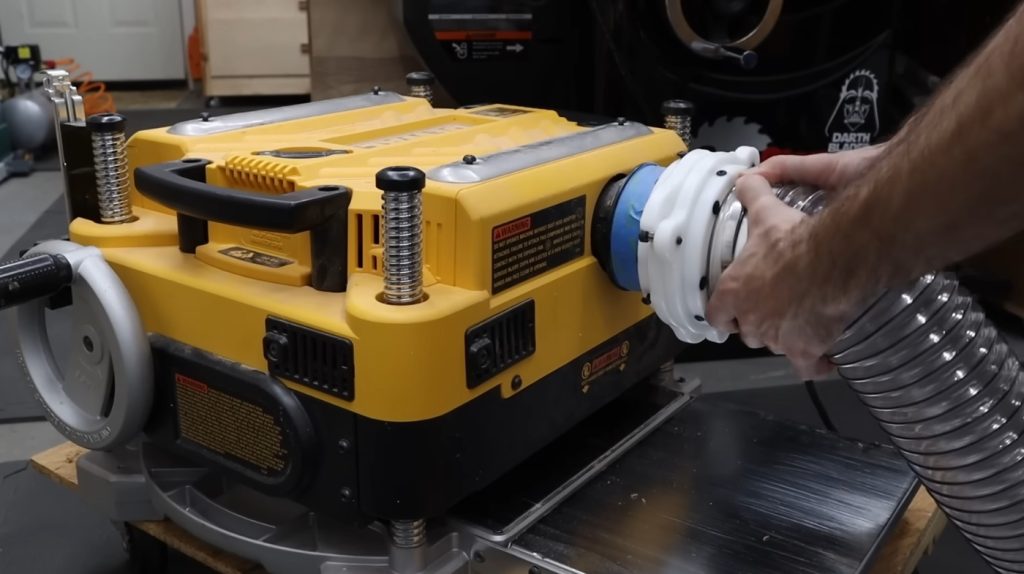
When choosing a dust collector machine, you’ll want to consider some key factors like:
Airflow Capacity Needs
Because airflow capacity directly affects a dust collector’s ability to capture dust and debris, you’ll want to select a machine with the right cubic feet per minute (CFM) rating for your workshop.
For most standard woodworking tools, a dust collector with at least 400-600 CFM works well. If your workshop is larger or runs multiple machines simultaneously, aim for a higher CFM, often over 1,000, to maintain strong suction and prevent dust from escaping or clogging the system.
Keep in mind, proper ductwork design also impacts effective airflow; minimizing sharp bends and long duct runs helps preserve the system’s performance.
Matching the airflow capacity to your tools and workshop size ensures your dust collector works efficiently and keeps your workspace clean and safe.
Filtration Efficiency Levels
How well does your dust collector filter airborne dust? Filtration efficiency levels show the percentage of dust and debris your machine captures, directly impacting your shop’s air quality.
You want a filter that can trap particles as small as 2.5 microns or less, as these fine dust particles pose health risks. Look for dust collectors with cyclone separators or high-performance filters, which can reach 99.5% efficiency or higher, drastically cutting down airborne dust.
The key metric is the micron rating of the filter bag or cartridge—the smaller the micron size, the finer the filtration. Efficient filtration not only improves air quality but also prevents filter clogging, reducing maintenance and keeping your dust collector running smoothly and reliably over time.
Motor Power Ratings
Filtration efficiency plays a vital role in maintaining air quality, but your dust collector’s motor power determines how well it handles dust removal from your workspace.
Motor power ratings, measured in horsepower (HP) or amps, directly affect suction strength and overall performance. For small workshops, a motor with at least 1 HP usually provides enough airflow to manage dust from a single tool.
However, if you run multiple machines or have a larger setup, you’ll want 1.5 HP or more to guarantee efficient dust extraction. Keep in mind, more powerful motors consume more electricity but offer greater capacity.
To get the best results, match the motor power to your workshop’s size and the volume of dust you generate, guaranteeing your dust collector keeps your workspace clean and safe.
Dust Bag Capacity
Choosing the right dust bag capacity can make a big difference in your woodworking workflow. Larger dust bags reduce how often you need to stop and empty them, letting you focus on your projects longer without interruptions.
When selecting a dust collector, match the dust bag size to your typical debris output to avoid frequent replacements. Keep in mind that bigger bags add weight and bulk, which might affect how easily you can move or store your machine.
Look for dust collectors with clear window panels on the dust bag so you can quickly see when it’s getting full.
Noise Level Considerations
Although dust collectors are essential for maintaining a clean woodworking space, their noise levels can considerably affect your comfort and safety.
Noise from dust collectors often ranges between 80 and over 100 decibels, with quieter models causing less disturbance. Since prolonged exposure above 85 dB can damage your hearing, choosing a quieter unit is vital—especially if you spend hours in your workshop.
Many machines include sound-dampening features or enclosures to reduce noise. Keep in mind that loud dust collectors can disrupt communication and overall comfort, particularly when other tools run simultaneously.
If noise remains an issue, consider adding acoustic enclosures or barriers to further lower sound levels, ensuring a safer and more pleasant working environment.
Space and Mounting Options
When setting up your woodworking dust collector, you’ll want to think about how its space and mounting options fit into your workshop layout.
Decide if a wall-mounted, floor-standing, or portable unit suits your space best. Wall-mounted models save valuable floor space but need secure brackets and enough clearance for safe installation.
Portable dust collectors on wheels give you flexibility to move them around but can take up more room when stored. If you have limited space, look for compact units with vertical or horizontal designs that fit snugly without crowding your shop.
Always verify the mounting system is sturdy and supports the collector’s weight to keep everything stable and safe while you work. This way, your dust collection setup won’t interfere with your workflow.
Compatibility With Tools
After deciding on the best space and mounting options for your dust collector, you’ll want to make sure it works seamlessly with your woodworking tools.
Start by ensuring the dust collector’s inlet size matches your tools’ hose diameters—usually 4 inches. Next, confirm the airflow capacity can handle multiple tools running at once without losing suction.
Check if the collector integrates easily with your existing ductwork or if you need adapters. Also, verify the filtration system captures the fine dust your tools produce to keep your shop safe.
Finally, consider if the dust collector supports connections to dust separators or remote hoses, enhancing both compatibility and tool mobility.
Maintenance and Accessibility
Since regular upkeep keeps your dust collector running smoothly, you’ll want to prioritize machines that offer easy maintenance and accessibility.
Look for features like removable filter bags, zippers, and quick-release mechanisms that simplify emptying and cleaning, preventing clogging and maintaining airflow.
Well-designed units provide easy access to internal components for inspection, filter replacement, and troubleshooting, so you won’t waste time or effort.
Models with clear windows or gauges let you monitor dust levels and perform timely upkeep before performance drops. Also, consider dust collectors with ergonomically placed maintenance points to reduce strain and enhance safety during servicing.
Frequently Asked Questions
How Often Should I Clean or Replace Dust Collector Filters?
You should clean your dust collector filters regularly to keep your system running efficiently. Generally, inspect and clean them every 1 to 3 months, depending on how often you use your equipment and the type of dust produced.
Replace filters when they show signs of wear, damage, or if cleaning no longer restores proper airflow. Staying on top of this prevents clogs, maintains suction power, and keeps your workspace safer and cleaner.
Can Dust Collectors Handle Fine Dust Particles Effectively?
Yes, dust collectors can handle fine dust particles effectively if you choose the right model with high-efficiency filters, like HEPA or cartridge filters.
You’ll want a system designed to capture those tiny particles, as standard filters might let them pass through. Make sure to maintain and replace filters regularly to keep performance ideal. This way, you’ll protect your health and keep your workspace cleaner from fine dust buildup.
Are Dust Collector Machines Noisy During Operation?
Yes, dust collector machines can be noisy during operation, but the noise level varies by model and size. You’ll find some units run louder due to powerful motors, while others have noise-reducing features like insulated cabinets or quieter fans.
If noise is a concern, you can look for models specifically designed to minimize sound or use soundproof enclosures. This way, you’ll keep your workspace quieter without sacrificing performance.
What Maintenance Is Required for Dust Collector Motors?
You know what they say: “A stitch in time saves nine.” To keep your dust collector motor running smoothly, regularly check and clean the motor’s vents to prevent dust buildup. Lubricate bearings as recommended by the manufacturer, and inspect belts for wear or tension issues.
Also, keep electrical connections tight and watch for unusual noises or overheating. Staying on top of these tasks helps avoid costly repairs and keeps your motor humming efficiently.
Can Dust Collectors Be Connected to Multiple Woodworking Tools Simultaneously?
Yes, you can connect dust collectors to multiple woodworking tools simultaneously. You’ll need a properly sized system with enough airflow and suction to handle all tools at once.
Using blast gates, you can open or close airflow to specific tools, improving efficiency. Just make sure your dust collector’s CFM rating matches the combined demand; otherwise, you might lose suction and reduce dust collection effectiveness.
Choose Smart, Breathe Easy, Craft Cleaner
Keeping your woodworking workspace clean and clear is essential for safety and efficiency. Choosing the correct collector can cut clutter and capture countless dust particles, creating a comfortable, clean corner to craft.
Whether you want wall-mounted wonders or portable powerhouses, picking a dust collector that perfectly fits your shop’s size and style will save sweat and stress. Stay smart, stay spotless, and show your shop some serious dust-defying dedication.
Last update on 2025-12-22 / Affiliate links / Images from Amazon Product Advertising API

